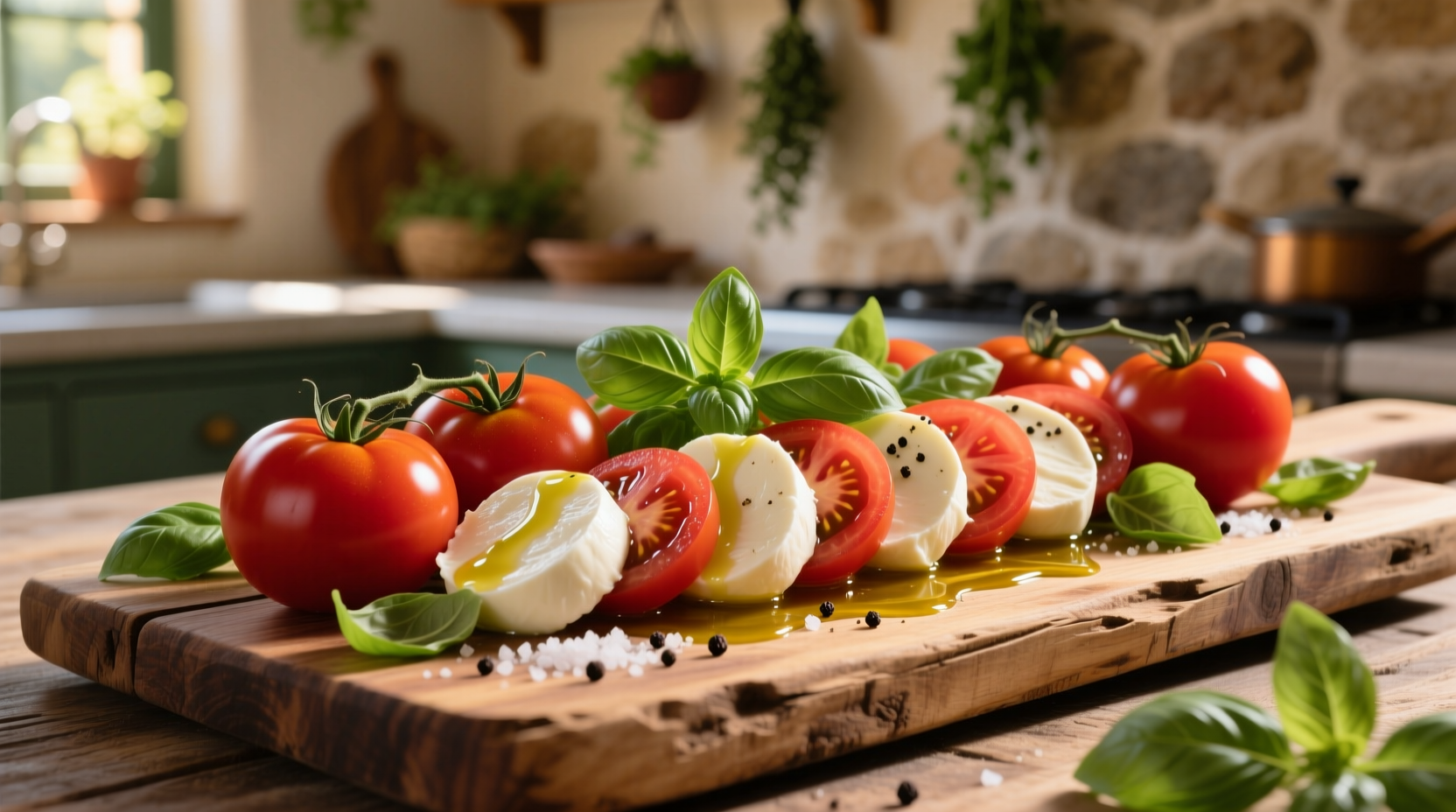The Essential History of Caprese Salad
Understanding the origins of caprese salad enhances your appreciation for this simple yet profound dish. Created in the 1920s on Italy's picturesque island of Capri, this salad was originally called insalata patriottica (patriotic salad) because its colors mirrored the Italian flag—red tomatoes, white mozzarella, and green basil. According to the Italian Food Historical Society, the dish gained international recognition after World War II when American tourists discovered it while visiting the island.
| Ingredient | Traditional Quality Indicator | Modern Substitution Risk |
|---|---|---|
| Tomatoes | Variety: San Marzano or Costoluto Genovese Texture: Firm but yielding Color: Deep red without green shoulders |
Using unripe tomatoes creates sour flavor and watery texture |
| Fresh Mozzarella | Type: Mozzarella di Bufala Campana (DOP) Texture: Slightly springy, moist but not wet Storage: In whey until preparation |
Pre-sliced mozzarella loses moisture and flavor complexity |
| Basil | Variety: Genovese basil Leaves: Deep green, uniform size Aroma: Sweet, anise-like fragrance |
Dry or yellowing leaves indicate age and diminished flavor |
Selecting Perfect Ingredients for Authentic Caprese
Ingredient quality makes or breaks your caprese salad. For tomatoes, choose varieties harvested at peak ripeness during summer months (June-August in the Northern Hemisphere). The University of California Agriculture Department confirms that vine-ripened tomatoes contain 30% more lycopene and develop superior sugar-acid balance compared to greenhouse-grown varieties. When selecting mozzarella, look for the DOP (Denominazione di Origine Protetta) certification which guarantees authentic production methods using water buffalo milk from specific Italian regions.

Step-by-Step Preparation Guide
Follow these professional chef techniques for perfect caprese every time:
1. Ingredient Preparation Sequence
Always prepare ingredients in this specific order to maintain optimal temperature and texture. Remove mozzarella from liquid 30 minutes before assembly to reach ideal serving temperature (68-72°F). Slice tomatoes just before assembly to prevent excess moisture. Tear basil leaves by hand rather than cutting to avoid bruising the delicate oils.
2. The Layering Technique
Professional chefs arrange caprese salad in alternating slices rather than stacked layers. Place tomato slices slightly overlapping on your serving platter, then position mozzarella slices between them. Tuck whole basil leaves between the ingredients rather than placing them on top. This creates flavor pockets as the olive oil and juices mingle during serving.
3. Seasoning Application Method
Apply seasoning in three stages: a light sprinkle of sea salt on tomatoes immediately after slicing, freshly cracked pepper between layers, and finishing salt (like Maldon) plus high-quality extra virgin olive oil just before serving. This layering technique enhances flavor development without drawing out excessive moisture.
Serving Context and Limitations
Caprese salad performs best under specific conditions that many recipes overlook. According to culinary research from the Slow Food Foundation, this dish should only be served between May and September when tomatoes reach natural ripeness without artificial heating. Attempting authentic caprese with winter tomatoes creates disappointing results regardless of preparation technique. The ideal serving temperature is 65-70°F—never refrigerate assembled caprese as cold temperatures mute the delicate flavors and cause tomatoes to become mealy.
Authentic Variations Worth Trying
While purists insist on the classic three-ingredient version, several regional Italian variations maintain authenticity:
- Caprese al Tartufo: Add thin shavings of black truffle during autumn harvest season
- Caprese Rosso e Giallo: Use a combination of red and yellow tomatoes for visual appeal
- Caprese con Pomodori Secchi: Incorporate a few house-made sun-dried tomatoes during tomato off-season
Avoid common Americanized versions that include balsamic vinegar or reduction—these were invented stateside and don't appear in traditional Italian preparations.
Storage and Service Timing Guidelines
Caprese salad represents one of the few dishes that should never be prepared in advance. The chemical reaction between tomatoes and salt begins drawing out moisture within 15 minutes, while basil oxidizes when exposed to air. For best results, assemble immediately before serving and consume within 20 minutes. If you must prepare components ahead, store sliced tomatoes on a wire rack (not plate) to prevent pooling, keep mozzarella submerged in its liquid, and store basil leaves between damp paper towels in an airtight container.











 浙公网安备
33010002000092号
浙公网安备
33010002000092号 浙B2-20120091-4
浙B2-20120091-4